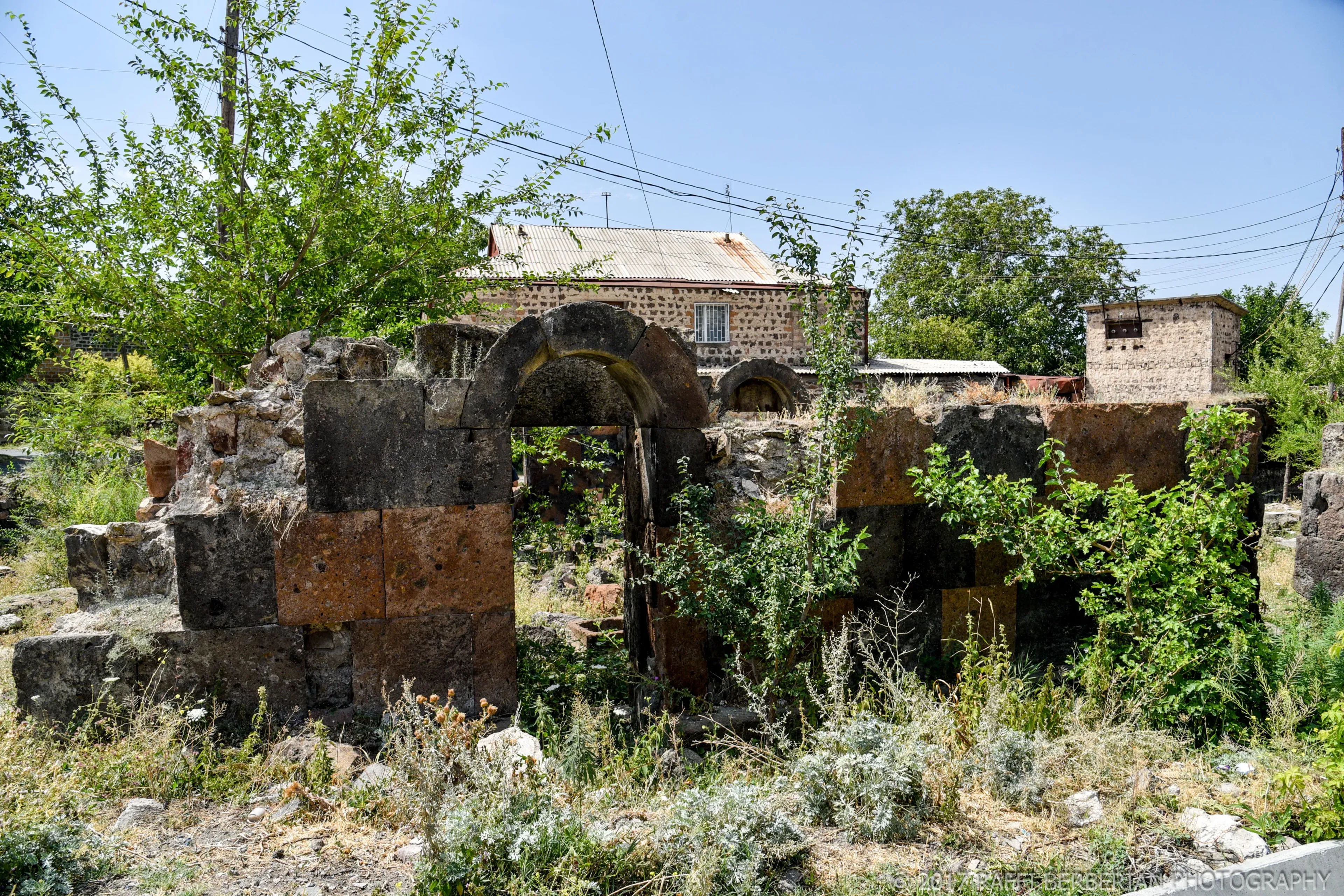Let's step back an additional 800 years from St. Astvatsatsin of Yeghvard and take a 5-minute walk to visit the 5th-6th century Yeghvard Katoghike Basilica. Not much remains of the basilica, but we know that it was a large three-nave basilica built during the 5th and 6th centuries under the rule of the Amatuni Armenian noble dynasty. There are bits and pieces of ornamentation still visible, but most notable is the southern entrance. You can see the style of entrance that would have been used all around the basilica. Also note the Crepidoma, or steps that surround the base of the church, which is an ancient Greek architectural element that is present in other early Armenian sites such as the Yererouk basilica or Zvartnots cathedral. Now, why would Yeghvard have such an old basilica$24 Well, Yeghvard is one of the oldest settlements in Armenia. The name Yeghvard was first mentioned during the 6th century AD. It first appeared in the historic chronicles of Catholicos Moses II of Yeghvard who reigned from 574-604 as the head of the Mother See of Holy Etchmiadzin. However, the area of Yeghvard has been settled since the beginning of the 2nd millennium BC. After the Christianization of Armenia in 301, the region of Kotayk became one of the important centers of the Armenian Church. Between the 7th and 9th centuries, Armenia suffered from Arab Islamic occupation. And between the 11th and 15th centuries, Yeghvard suffered from Seljuk, Mongol, Ag Qoyunlu, and Kara Koyunlu invasions. According to historian Stepanos Orbelian of the 13th century, the St. Astvatsatsin church was built and completed in 1301 because the Katoghike Basilica was already ruined. This area has such a rich history!
Recommended by Metaport







